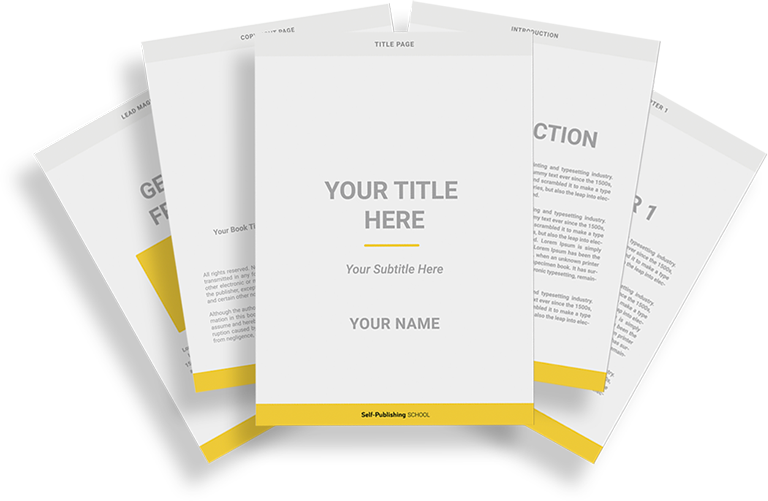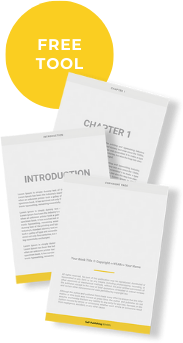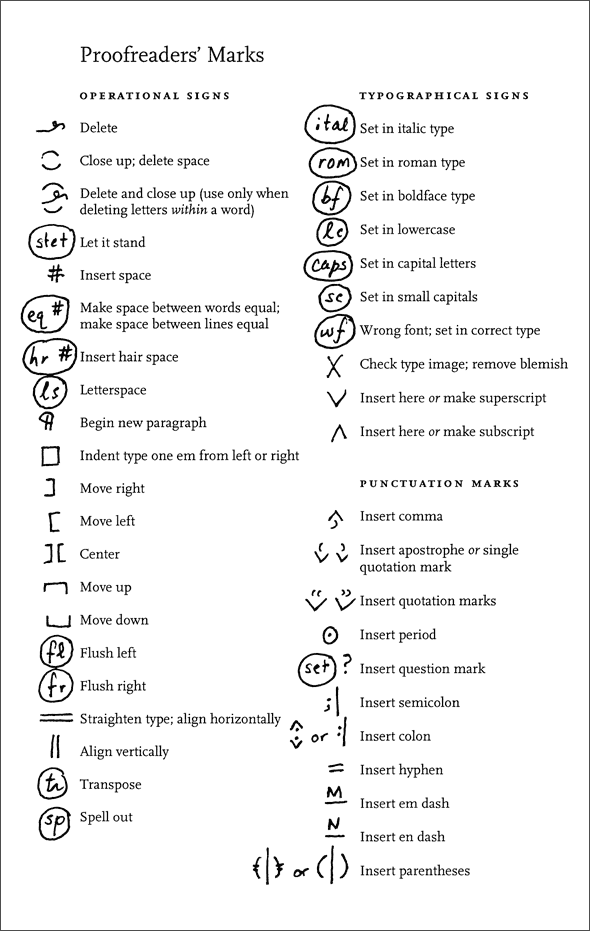If you are an author or an editor, it’s important for you to understand proofreader marks – otherwise, a lot can get lost in translation during the editing process.
While some proofreader marks are obvious, a lot of them aren’t so straightforward, so today’s guide will help you to understand everything you need to know during editing.
In this article, we will go over what proofreader marks are, how to use them, if they are necessary, and the most commonly used symbols during the proofreading process so you can easily understand them come editing time.


Book Outline Generator
Choose your Fiction or Nonfiction book type below to get your free chapter by chapter outline!
Book Outline Generator
Enter your details below and get your pre-formatted outline in your inbox and start writing today!
CONGRATULATIONS
Thanks for submitting! Check your email for your book outline template.
In the meantime, check out our Book Outline Challenge.

This Guide to Proofreader Marks Will Cover:
What is a Proofreader Mark?
Proofreader marks (also known as “editors marks”) are used by proofreaders and editors when working on printed copies of a manuscript or document. Because you can’t edit the text directly on hard copies, proofreader marks are used to clearly denote what the author needs to change.
Proofreader marks can be used to highlight issues with spelling, punctuation, grammar, and formatting.
Editors marks can appear inline (on top of the text) or in the margins of the document. Sometimes a combination of the two is needed.
These are sometimes referred to as “textual marks” and “marginal marks.”
Marginal marks, which are placed in the margin, tend to explain or expand on the textual marks.
This is dependent on the editor, however, as some may choose to write above or below the text directly by the textual marks. This is why some editors request for documents to be double-spaced.
Proofreader marks consist of a range of symbols and abbreviations. There are standardized systems available for proofreader marks, which we will cover below, but some editors have slight variations that they use, so you will have to discuss their specific system with them.
If you are an editor, make sure to talk to authors about what your symbols mean to eliminate confusion during the editing process.
Do You Have to Use Proofreader Marks?
Proofreader marks aren’t always necessary. If you are working on a computer file instead of printed text, you can track changes and send comments and suggestions electronically instead.
Of course, some editors request to work with printed manuscripts specifically. If your editor works from a hard copy, you can expect them to use a system of editors marks on your manuscript.
Examples of Proofreader Marks
Now that you know what proofreader marks are and how they are used, it’s time to take a look at the symbols themselves.
The table below comes from the Chicago Manual of Style. It covers the main proofreading symbols used by editors in the USA. While the table uses black ink, most editors choose to make their marks in red ink.
As noted above, some editors will use marks that deviate slightly from the Chicago Manual of Style, but this is a great jumping off point for understanding proofreader marks.

Delete
If your editor wishes you to omit a word, phrase, or sentence, they will draw a horizontal line through the portion to be omitted. This line ends with a curled swoop above the line of text.
If deleting a punctuation mark or single letter, the portion to be omitted will be circled with a vertical delete swoop mark above it.
Delete Space
If you have an unnecessary space in your work, the editor will use two curved lines in the space that needs to be closed. The top line curves in an upward arc and the bottom line curves in a downward arc.
Delete and Close Up
The “delete and close up” proofreader mark is only used when omitting letters from the middle of the word. The editor will use the swooping delete mark on the letter in question, and place the curved “delete space” marks above and below the text.
Let It Stand
Sometimes proofreaders get a bit hasty with their editing marks. If they have made an error and wish you to disregard their mark, they will write “stet” inside a circle. This means you should ignore that specific proofreading mark and keep the text as is.
Insert Space
If you are missing space in your text, your editor will use the # symbol to show that a space needs to be added in. Sometimes the # is in the margin and a ^ symbol is used in the line of text to show where to insert the space.


Book Outline Generator
Choose your Fiction or Nonfiction book type below to get your free chapter by chapter outline!
Book Outline Generator
Enter your details below and get your pre-formatted outline in your inbox and start writing today!
CONGRATULATIONS
Thanks for submitting! Check your email for your book outline template.
In the meantime, check out our Book Outline Challenge.

Equalize Space
When you see an “eq #” inside a circle, that means that the spacing of your words or perhaps the whole line is uneven and you need to fix your formatting.
Insert Hair Space
An “hr #” within a circle means that your editor wants you to insert a hair space. A hair space is a super thin space that can help provide breathing room for certain fonts where the punctuation marks have too tight of side bearings. This isn’t very common, so you probably won’t see this mark!
Letterspace
The letters “ls” within a circle is the proofreading mark for letterspace. This means that the spacing of letters in the word is uneven and you need to check your formatting.
Begin New Paragraph
The new paragraph sign is one you may be familiar with from school. When an editor wants you to start a new paragraph, they will use a symbol that looks like a backwards capital P with two vertical lines instead of one.
Indent Type One Em
A square in the margin means you need to indent your line one em space from left to right. An em space is equivalent to the point size of the font you are using For example, if you’re using a 12-point font, one em space would be 12 points wide.
Move Right
If your formatting is off and needs to be shifted to the right, your editor will denote this with a ] mark.
Move Left
If your formatting is off and your text needs to be moved to the left, your editor will use the [ symbol to show this.
Center
If your chapter title or body text needs to be centered, your editor will use the proofreader marks ][ to show this.
Move Up
If you need to move a portion or page or text up, your editor will use a ⎴ symbol in the margin.
Move Down
If you need to move a portion or page of text down, your editor will use a ⎵ symbol in the margin.
Flush Left
The letters “fl” in a circle are another formatting mark that means you need to move your text flush to the left margin.
Flush Right
The letters “fr” in a circle are the opposite of “fl.” You need to move your text flush to the right margin.
Straighten Type
The straighten type symbol looks like a long = sign. It means you need to align your lines of text horizontally. Since computers do this naturally, you won’t see these proofreader marks unless you use a typewriter.


Book Outline Generator
Choose your Fiction or Nonfiction book type below to get your free chapter by chapter outline!
Book Outline Generator
Enter your details below and get your pre-formatted outline in your inbox and start writing today!
CONGRATULATIONS
Thanks for submitting! Check your email for your book outline template.
In the meantime, check out our Book Outline Challenge.

Align Vertically
If you need to align your lines of text vertically, your editor will use the║symbol in the margin to show you this.
Transpose
The letters “tr” in a circle mean you need to transpose words or letters that are in the wrong order. An editor will put the “tr” in the margin and show which words need to be swapped by drawing a squiggly line around them in the text.
For example, if you wrote “the team does building trust activities,” the editor may ask you to transpose it to “the team does trust building activities.”
Spell Out
Sometimes you can get away with acronyms and abbreviations in your writing, but other times you need the full words. If you need to spell something out completely, your editor will use the letters “sp” in a circle.
Set in Italic Type
Proofreaders use a combination of two proofreader marks to show when you should put text in italics. They will underline the word or phrase in question, and then write “ital” in a circle in the margin.
Set in Roman Type
If you use italics when you shouldn’t, your editor may ask you to change the writing to regular or “roman” type. They will do this by underlining the section and writing “rom” in a circle in the margin.
Set in Bold Type
If your writing needs to be in bold font, the editor will underline the section that needs to be changed and write “bf” in a circle in the margin.
Set in Lowercase
The letters “lc” in a circle mean that you need to change the underlined letters to lowercase.
Set in Capitals
The letters “caps” in a circle mean that you need to change the underlined letters to all uppercase.
Set in Small Capitals
In typography, small capitals are characters that resemble uppercase letters that are reduced in height and weight. If your editor wants you to use small capitals, they will use the letters “sc” in a circle in the margin.
Wrong Font
If you happen to switch to the wrong font somewhere in your manuscript, the editor will ask you to change it to the proper font using the letters “wf” in a circle.
Check Type Image
This is another of the proofreader marks that you won’t see unless you use a typewriter. An X will be used if there is an issue with one of the type elements that causes it to print unclearly or form a blemish.
Insert Here
If your editor wants you the insert something into the text, they will use the proofreader marks ∨ or ∧ to show where to insert the word, letter, punctuation mark, or phrase. This may be accompanied by notes in the margin or above or below the line of text.
Insert Comma
When you are missing a comma in your writing, your editor will let you know with a ∧ symbol and a comma.
Insert Apostrophe
If you need to add an apostrophe to your text, your editor will use a ∨ symbol and an apostrophe to show you.
Insert Quotation Marks
If your editor wants you to add in quotation marks, they will use a ∨ symbol and quotation marks.
Insert Period
When you are missing a period, your editor will note this with a period inside a circle.
Insert Question Mark
The mark for inserting a question mark is self explanatory. Your editor will simply pop a question mark into the text.
Insert Semicolon
The proofreader marks for inserting a semicolon look like this ;⏐ and are used in the line of the text as opposed to in the margin.
Insert Colon
The marks for inserting a colon are very similar to those for inserting a semicolon. They look like this :⏐and are put directly into the line of text.
Insert Hyphen
When you need to put a hyphen between two words the editor will use either a single line or a double line like an = sign to denote this.
Insert Em Dash
If your editor wants you to insert an em dash they will use a capital M that is underlined.
An em dash is longer than a hyphen or en dash and looks like this — em dashes are used to separate out phrases or portions or a sentence to draw extra attention to them without using a colon or semicolon.
Insert En Dash
The en dash is longer than a hyphen, but shorter than an em dash. It is mainly used between dates to mark a span of time. If your editor wants you to insert an en dash, they will use an underlined capital N.
Insert Parentheses
When you need to add parentheses in your text, you will see these proofreader marks in the margin (⏐) as well as a carrot showing where to insert the marks.
Edit Your Manuscript Masterfully
Now that you understand proofreader marks, you’ll be able to easily work with editors and proofreaders during the traditional or self-publishing process.
Remember, not all editors use the same proofreader marks, but this is a great starting point to understand the editing process. Make sure to speak with your specific editor to see if there are any special marks they use when editing a physical manuscript.


Book Outline Generator
Choose your Fiction or Nonfiction book type below to get your free chapter by chapter outline!
Book Outline Generator
Enter your details below and get your pre-formatted outline in your inbox and start writing today!
CONGRATULATIONS
Thanks for submitting! Check your email for your book outline template.
In the meantime, check out our Book Outline Challenge.

Frequently Asked Questions
What are the marks in proofreading?
Proofreading marks are symbols and notations used by proofreaders to indicate changes needed in a printed manuscript. They highlight issues with spelling, punctuation, grammar, and formatting, guiding the author on what needs to be corrected.
How do I add proofreading marks in Word?
In Microsoft Word, you can use the Track Changes feature to add proofreading marks. This allows you to make edits and suggestions that the author can review and accept or reject. You can also use the Comments feature to leave specific notes.
How do you proofread a document?
To proofread a document, read through it carefully, marking any errors or issues with proofreading marks or using the Track Changes feature in a word processor like Word or Google Docs. Check for spelling, punctuation, grammar, and formatting issues. Read it multiple times to catch all mistakes.
How do you use proofreading symbols?
Proofreading symbols are used to indicate specific changes needed in the text. For example, use a horizontal line to delete text, a # symbol to insert a space, or a ∧ symbol to add a comma. Each symbol has a specific meaning, which should be consistent and clear to the author.
